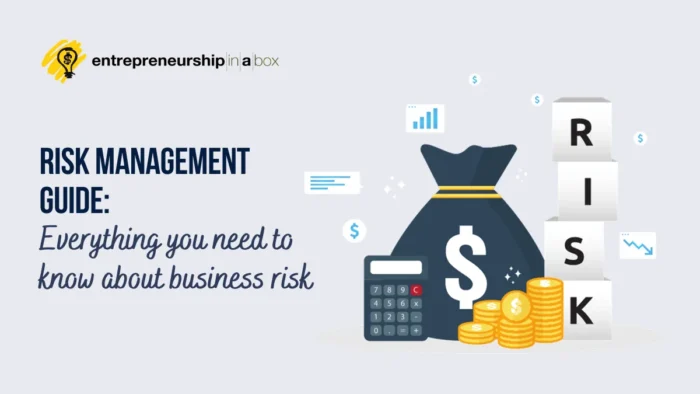As a business owner, you constantly juggle tasks and responsibilities to ensure your company’s success. But have you considered the potential risks that could threaten your stability? From financial losses to legal complications, countless factors can destabilize even the most successful businesses. That’s why proactive risk management ensures long-term growth and survival.
In this blog post, we’ll explore how mitigating potential losses, enhancing decision-making, protecting assets and resources, ensuring business continuity, and meeting legal and regulatory requirements all play a role in maintaining a stable business environment.
Mitigating potential losses
No matter how successful your business may be, there’s always the possibility of unexpected events that can result in significant financial setbacks and even threaten your company’s viability. You can mitigate potential losses by conducting regular risk assessments. This involves identifying all possible risks that could impact your business, analyzing their likelihood and impact, and developing strategies to minimize or eliminate them.
Another important step is ensuring adequate insurance coverage for various risks. For example, if you own a retail store, you’ll need property insurance to protect against damage or loss due to theft or natural disasters. On the other hand, if you opt for business insurance products, your company gains a layer of financial protection and risk transfer.
Establishing contingency plans for emergencies such as data breaches, power outages, or supply chain disruptions is also essential. These plans should outline specific steps employees should take in response to each type of emergency and provide guidelines for resuming normal operations as quickly as possible.
Related: Everything You Need to Know About Financial Risk
Enhancing decision-making
By comprehensively understanding potential risks, businesses can make informed decisions that mitigate losses and ensure long-term success. You can enhance decision-making by analyzing past risks and their outcomes. This allows businesses to identify patterns and trends, enabling them to anticipate future risks before they occur. Utilizing this knowledge in decision-making ensures that the best action is taken while minimizing potential negative impacts.
You should also consider collaboration between teams within the organization. By involving multiple perspectives, ideas can be shared, leading to more innovative solutions for all possible scenarios. Utilizing technology such as predictive analytics or data mining tools can provide valuable insights into potential risks and aid in making informed decisions quickly.
Protecting assets and resources
By identifying potential threats that could harm your business, you can take steps to safeguard your valuable assets and resources from damage or loss. This includes everything from physical property like equipment and facilities to intangible assets such as intellectual property and data. Shift your focus to implementing security measures such as surveillance cameras, access control systems, fire alarms, and backup generators. These tools help prevent theft, vandalism, fires, power outages, or other emergencies that could halt operations.
Assets can also be protected through insurance policies tailored to cover specific business risks such as liability claims or cyber-attacks. Having the right insurance coverage can mitigate financial losses if something unexpected happens. It’s also essential to have proper documentation for all important information related to your business operations. This includes contracts with suppliers, partners, customers, employees, etc. Also, patents, trademarks, licenses, financial records, tax filings, bank statements, cash flow analysis, etc., among others.

Ensuring business continuity
Ensuring business continuity means ensuring that a company’s critical functions and operations are not disrupted by unforeseen events such as natural disasters, cyber-attacks, or economic downturns. One way of ensuring business continuity is by creating a disaster recovery plan in case something goes south.
The plan should outline the steps needed in case of an emergency, including identifying the critical systems and processes that must remain operational and assigning responsibilities for their maintenance. Another important aspect is having backup facilities in place. This means having alternative locations where employees can work in case the primary location becomes unavailable due to any reason.
Investing in technology solutions such as cloud-based storage and virtual private networks (VPNs) can also help ensure business continuity by allowing remote access to data and applications even when staff cannot physically access workplace premises. Moreover, regular testing of these plans is crucial to identify gaps or weaknesses before they become real problems during an actual crisis situation.
Meeting legal and regulatory requirements
Meeting legal and regulatory requirements involves ensuring compliance with laws, regulations, and industry standards that govern the operations of a business within its respective jurisdiction. Non-compliance can result in hefty fines, negative brand reputation, loss of customers’ trust, or even legal action. Therefore it’s crucial to identify applicable regulations and establish processes to ensure adherence.
Businesses must keep up-to-date with changing laws and regulations, as non-compliance poses severe threats. Examples include data protection laws like GDPR or HIPAA that protect sensitive customer data from unauthorized access. Additionally, meeting regulatory requirements shows commitment to corporate social responsibility by adhering to environmental protection policies such as carbon emissions reduction targets set by local authorities.
Conclusion
Organizations that take this approach can mitigate potential losses, enhance decision-making, protect assets and resources, ensure business continuity, and meet legal and regulatory requirements. By identifying potential risks early on and taking steps to address them before they become issues, businesses can build resilience in the face of uncertainty.
Remember that risk management is not a one-and-done activity; it requires ongoing attention to changing circumstances. For optimal results, organizations must adopt a comprehensive approach involving all enterprise stakeholders.





